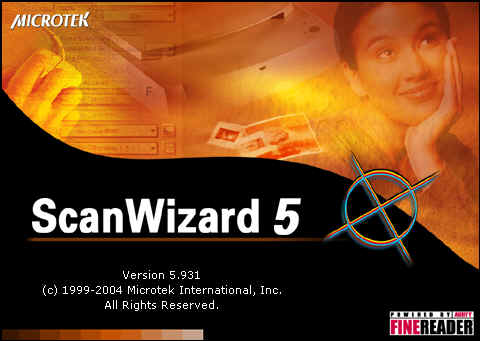- 6.8Good
Pros
- ✓Low price;
- ✓high maximum resolution;
- ✓sharp colour scans;
- ✓fast greyscale speed;
- ✓dedicated scan buttons.
ScanWizard Bio - ScanWizard DI - ScanWizard EZ - ScanWizard Graph - ScanWizard Industry. Microtek + Home / Products / ScanMaker Series. ScanMaker 5800 High Quality 2400 x 4800 dpi Scanning. The ScanMaker 5800 represents the new price-performance standard in 48-bit, high CCD resolution desktop scanners, giving you the quality you really. Microtek ScanWizard 5 is the scanner controller program. This TWAIN-compliant driver enables your computer and other TWAIN-compliant software to communicate with your Microtek scanner. ScanWizard 5 is TWAIN compliant software. It works with any OCR. MICROTEK scanners are designed for the professionals who require exceptional image quality. - ScanWizard Graph - 2.5D Modeling Wizard - MiiNDT - MiBio - ScanWizard Medi - ScanWizard Pro - ScanPotter (OS X) - Doc Wizard - ScanWizard Industry.
Cons

- ✕Slow colour scanning;
- ✕inefficient manuals;
- ✕poor-quality film/slide attachment.
Microtek’s low-cost ScanMaker 4800 promises a big return on a small investment. It features 48-bit colour, a 2,400 by 1,200 dots per inch (dpi) maximum resolution, and a film/slide attachment. But our tests revealed that although some of the ScanMaker 4800's features are exceptional, others are just for show.
The £99.99 (ex. VAT) ScanMaker 4800's descriptive poster makes setup easy. The scanner connects via USB and supports Windows 98, 2000, ME and XP, as well as Mac OS 8.6 through 9.x. Installation of the Microtek ScanWizard 5 driver and additional applications – Abbyy’s FineReader for optical character recognition, Ulead’s PhotoExplorer for Windows Explorer-like file searching, Adobe’s PhotoDeluxe 4.0 (PC) or Photoshop LE 5.0 (Mac) for image editing, and Adobe’s Acrobat Reader -- was also fairly painless, although Microtek offers novices no guidance for deciding which ones to load.
The ScanMaker 4800 is also easy to use, thanks to the five buttons lining its face. The Scan button generates a preview of your image in the ScanWizard 5 driver that you can then tweak, scan as-is or send to another image-editing application. Three other buttons scan the image and transfer it automatically to your printer, your email program or your word processor. A fifth button sends your scan directly to a Web site of your choice.
The ScanWizard 5 driver itself has a host of satisfying features, including a pared-down control panel that lets you set the brightness, contrast and saturation; an Advanced panel extends these capabilities considerably. Unfortunately, you cannot switch between panel modes while working on the same pre-scanned image.

We usually criticise products for having insufficient documentation, but in the case of the ScanMaker 4800, it was just the opposite: its mélange of brochures and CD-based material actually left us more confused than informed. One brochure guides you through ScanWizard 5, while another walks you through the included LightLid attachment for 35mm film and slide scanning. However, the full-blown user manual is available in electronic format only. Microtek should collect all of this errant documentation into one convenient guide.
Microtek Scan Wizard 5 Installer
The ScanMaker 4800 displayed mixed results in our tests. The scanner's sigma-6 CCD (charge-coupled device) scanning mechanism (with six instead of the usual three rows of light sensors) produced good colour scans, but took 43.7 seconds per scan, making the ScanMaker 4800 among the slowest models we've tested. Its 16.4-second greyscale speed was a lot better, but scans looked slightly overexposed. Quality took a drastic dive with film and slide scanning using the LightLid attachment. You can't expect professional-level film/slide output from a sub-£100 scanner, but the particularly poor film scans looked as though they were made inside a fish tank.